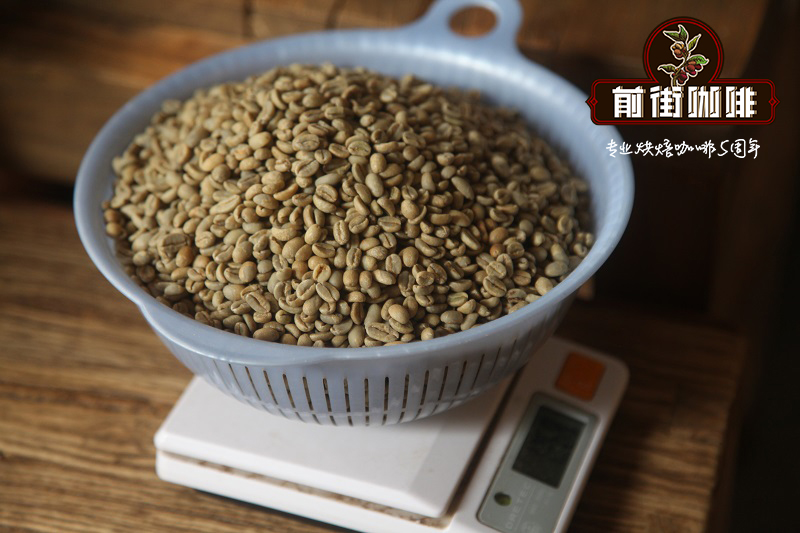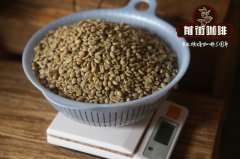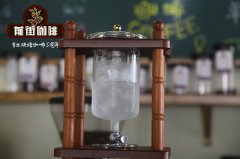Brief introduction of single-origin coffee beans in Peru-[Kaddura] of Agmer Colorado Coffee Farm

Professional coffee knowledge exchange more coffee bean information please follow the coffee workshop (Wechat official account cafe_style)
A brief introduction to single-origin coffee beans in Peru-the flavor and taste of [Kaddura] from Agmer Colorado Coffee Farm?
It is produced by GilmerC ó rdova of Agmer Colorado Farm from Arabica trees of red and yellow Caturra varieties. This coffee won sixth place in the Peruvian Cup of Excellence in 2017. Processed by conventional wet or "washing" methods, in which the skin and flesh are removed from beans or seeds before drying. Founded in 2010, Red Rooster is an organically certified miniature roaster that focuses on socially conscious coffee and premium coffee.
Agmer Colorado Farm was purchased in 1990 and passed on from father to son: the original half-hectare land now covers seven hectares, and four grow coffee-a mixture of common varieties, including Caturra. The coffee is picked and ripe, taken out on the same day, and fermented and dried in a cement tank before washing.
Gilmer Mejia runs the beautiful FincaEcol ó gicaAguaColorada farm, and his father, Filadelpo Cordova Mejia, was acquired in 1990 for growing coffee. This is a piece of land covering 7 hectares and 4 hectares, growing Caturra and other common varieties. Wilmer is sure to mature under the protection of wild shade trees and pick all his coffee by hand. He uses compost and bird dung to fertilize his farm instead of herbicides. Gilmore is a young and innovative producer who is committed to quality and passion in all aspects, from his farm management to the ultimate taste in the cup.
Although coffee arrived in Peru relatively early in the mid-18th century, it was not until the 20th century that commercial exports began, European demand increased and Indonesian coffee production declined significantly. The British presence and influence in the country particularly helped to increase and promote exports: at the beginning of the 20th century, the British government acquired about 2 million hectares of land from the Peruvian government as payment of defaulted loans, most of which was converted into British coffee plantations.
As in many Central and South American countries, as large European land ownership was sold or redistributed throughout the 20th century, farms became smaller and more decentralized, providing independence for farmers, but also limited their access to resources and larger commercial markets. However, unlike many other countries where the coffee economy is dominated by smallholder farmers, Peru lacks organizations or infrastructure to provide economic or technical support to farmers-a loophole in addition to organization and certification. The country has a large number of certified organic coffee, as well as Fairtrade, Rainforest Alliance and UTZ certified coffee. About 30% of the small farmers in the country are members of democratic cooperatives, which increases the popularity of coffee in the region.
As of 2010, Peru was one of the top producers of Arabica coffee, ranking fifth in terms of world production and exports of Arabica coffee. The remoteness and small average size of coffee farms hinder the differentiation of large farms, which makes it possible for micro-area development and marketing in other growing areas, but like everything else in specialty coffee, this situation is changing rapidly. The country's lush highlands and good heirloom varieties provide growers with the potential to resist limited infrastructure and market access barriers, and as production increases, we are more likely to see these types of progress.
The father of the producer acquired the land in 1990. At that time, the farm relied on half a hectare of typical varieties and caturra coffee.
In 1997, the entire surface can be installed and the same variety can be retained. At present, they cover an area of 7 hectares, of which 4 hectares are produced coffee. The farm is located at a height of 1850 msnm
And there is a mountain.
Currently, 80 to 100 square feet can be produced on 4 hectares of land.
General technical information:
Area: Kahamaka
Harvest year: 2107
Harvest month: maybe October
Farm name: FincaEcol ó gicaAguancolorada
Altitude: 1850 m
Coffee mill type: wash
Blooming: the second week of May
Crop technical information
Soil type: sticky
Air temperature / mean temperature: 23 °C
Average rainfall: 1400 to 1600
Crop conditions: manual
Flora and fauna types exist: wild trees, mohema, spirals, animals such as squirrels, sajino, parrots.
Fertilization method: island bird manure, compost
Application of herbicides: non
Environmental protection measures: solid and liquid waste
Processing type: washing
Fermentation type: cement tank
Rich and sweet, floral hues, roasted cocoa almonds, caramel, aroma and musk in the cup. Balanced, sweet sour structure, juicy acidity; refreshing velvety taste.
Qianjiesou Chong recommends:
Filter cup: Hario V60
Water temperature: 90 degrees
Degree of grinding: small Fuji degree of grinding 4
Cooking methods: the ratio of water to powder is 1:15, 15g powder, the first injection of 25g water, 25 s steaming, the second injection to 120g water cut off, waiting for the powder bed water to half and then water injection, slow water injection until 225g water, extraction time about 2:00
Analysis: using three-stage brewing to clarify the flavor of the front, middle and back of the coffee.
Important Notice :
前街咖啡 FrontStreet Coffee has moved to new addredd:
FrontStreet Coffee Address: 315,Donghua East Road,GuangZhou
Tel:020 38364473
- Prev

Peru Coffee-LAS ORQUIDEAS Farm [Kaddura Variety] Coffee Bean planting Information introduction
Professional coffee knowledge exchange more coffee bean information please follow the coffee workshop (Wechat official account cafe_style) Peruvian coffee-LAS ORQUIDEAS farmers
- Next

Nicaraguan Coffee Bean selection-La Divina Provindencia Coffee Farm [Pakamara
Professional coffee knowledge exchange more coffee bean information please follow the coffee workshop (Wechat official account cafe_style) Nicaraguan coffee bean selection-La Divina Provindencia coffee farmers
Related
- Detailed explanation of Jadeite planting Land in Panamanian Jadeite Manor introduction to the grading system of Jadeite competitive bidding, Red bid, Green bid and Rose Summer
- Story of Coffee planting in Brenka region of Costa Rica Stonehenge Manor anaerobic heavy honey treatment of flavor mouth
- What's on the barrel of Blue Mountain Coffee beans?
- Can American coffee also pull flowers? How to use hot American style to pull out a good-looking pattern?
- Can you make a cold extract with coffee beans? What is the right proportion for cold-extracted coffee formula?
- Indonesian PWN Gold Mandrine Coffee Origin Features Flavor How to Chong? Mandolin coffee is American.
- A brief introduction to the flavor characteristics of Brazilian yellow bourbon coffee beans
- What is the effect of different water quality on the flavor of cold-extracted coffee? What kind of water is best for brewing coffee?
- Why do you think of Rose Summer whenever you mention Panamanian coffee?
- Introduction to the characteristics of authentic blue mountain coffee bean producing areas? What is the CIB Coffee Authority in Jamaica?

